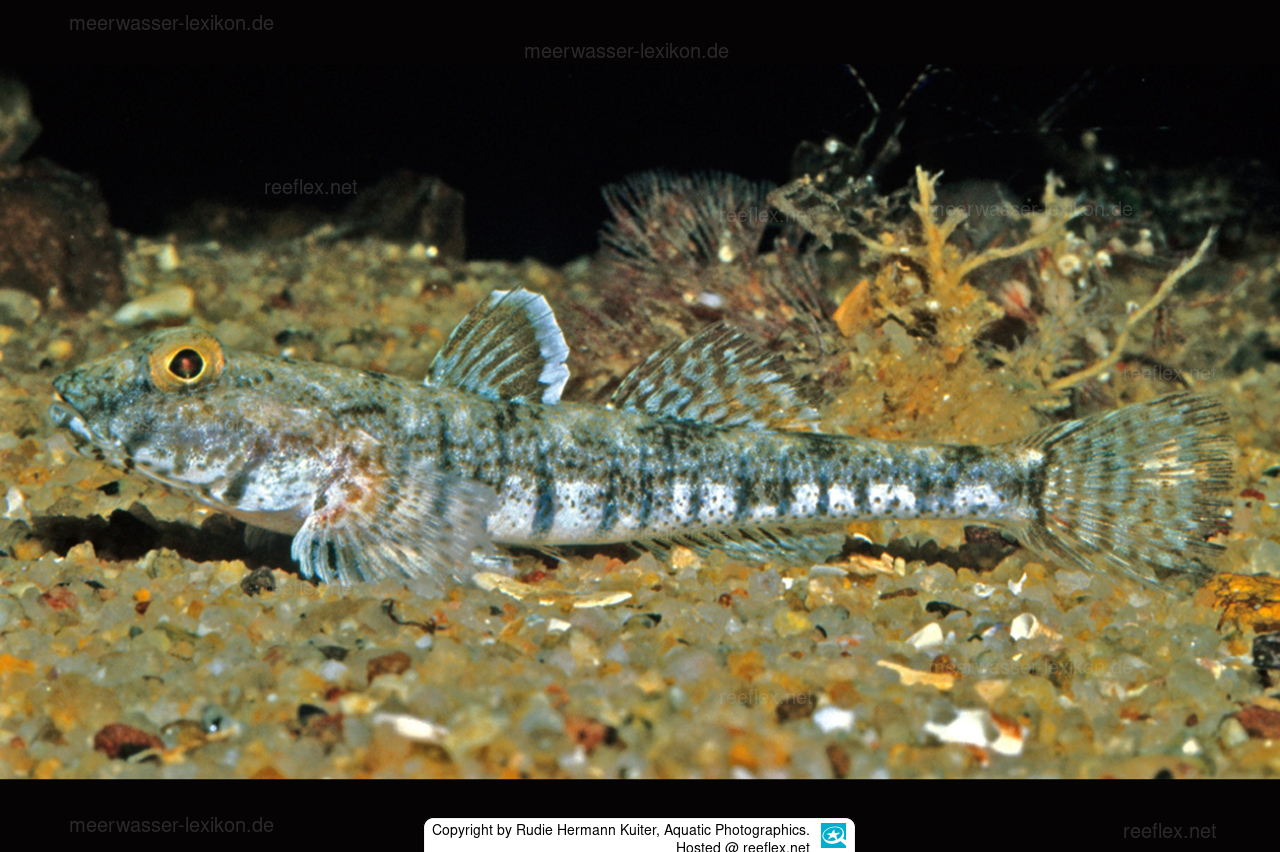Info
Nesogobius maccullochi is a pale gray to brown sand goby with scattered white and brown spots, a black bar running from the eye to the middle of the jaw and a black vertical bar running from the eye to just behind the rear end of the jaw.
A vertical bar is visible on the gill cover, and on the midline there are 4–6 horizontally running, elongated, dark brown spots;.
At the rear end of the caudal peduncle there is a round black spot, followed by a black vertical spot at the base of the tail, which is often connected to it.
Adult males have narrow vertical stripes on the side of the body that extend to the lighter belly.
Etymology: The genus name “Nesogobius” is composed of the Greek word “nessa” = island and the Latin word “gobius” = gudgeon.
Etymology: The species was named after Allan R. McCulloch, former curator of fishes at the Australian Museum. The name is not only a tribute to his work, but also indicates that this is the species that McCulloch and Ogilby confused under the name Gobius hinsbyi.
A vertical bar is visible on the gill cover, and on the midline there are 4–6 horizontally running, elongated, dark brown spots;.
At the rear end of the caudal peduncle there is a round black spot, followed by a black vertical spot at the base of the tail, which is often connected to it.
Adult males have narrow vertical stripes on the side of the body that extend to the lighter belly.
Etymology: The genus name “Nesogobius” is composed of the Greek word “nessa” = island and the Latin word “gobius” = gudgeon.
Etymology: The species was named after Allan R. McCulloch, former curator of fishes at the Australian Museum. The name is not only a tribute to his work, but also indicates that this is the species that McCulloch and Ogilby confused under the name Gobius hinsbyi.







 Rudie Hermann Kuiter, Aquatic Photographics, Australien
Rudie Hermann Kuiter, Aquatic Photographics, Australien





